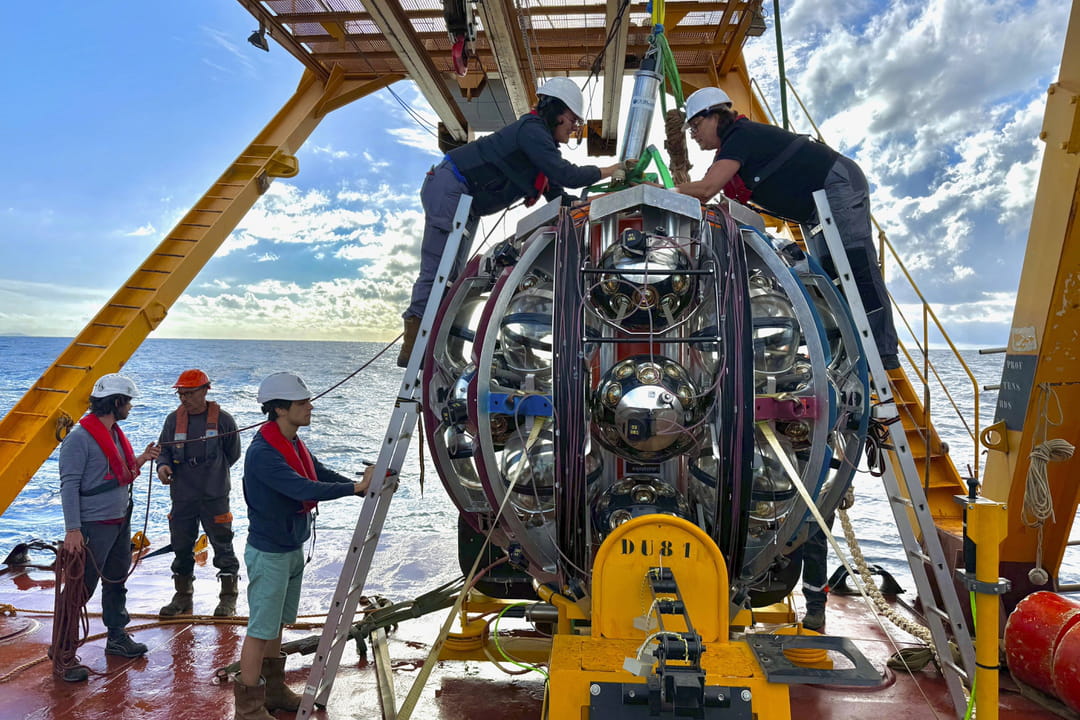Scientists have identified at the bottom of the Mediterranean a “cosmic messenger” never seen before. One of its characteristics impressed them.
It was spotted by photomultiplicators immersed at the bottom of the Mediterranean, 3,450 meters deep off Sicily. This “special cosmic messenger” has a characteristic never recorded on earth until now as explained in the journal Nature This Wednesday, February 12, an international team of scientists of the collaboration km3net, mainly operated by the CNRS and its Dutch and Dutch partners. His first identification took place in February 2023, it will therefore have taken two years to confirm the identification and analyze its properties.
It neutrino has indeed proved to be the most energy -consuming ever measured, with 220 Petaélectronvolts, or 220 billion million electrolts, which is thirty times higher than those recorded before. “It is roughly the energy of a ping-pong ball falling a meter in height”, but contained “in a single elementary particle”, compared at a press conference Aart Heijboer, professor at the Dutch Subatomic Physics Institute. Above all, the neutrino has almost no mass while the ball weighs around 50 grams.
Its minimal interaction with material makes it a “ghost particle”. The underwater environment, transparent and without parasitic light, is thus ideal for identifying it. When a neutrino interacts with a water molecule, this can cause the appearance of a luminous radiance, called the Ccherenkov radiation, detectable by sensors.

However, this is a very interesting element because it can testify to the explosion of a supernova, the fusion of two stars or the activity around the black supermassive holes. These cosmic events generate, in fact, neutrinos with “ultra-high” energy. We do not know the origin of the one found, but it is the marker of a mysterious phenomenon that occurred extremely far from our planet. “What we are quite sure is that it does not come from our galaxy,” said Damien Dornic, researcher at the CPPM. These particles can escape from their production area and cross the universe. Its source will therefore be studied.
“This first detection of a neutrino of several hundred Pev opens a new chapter in the astronomy of neutrinos and a new observation window on the universe,” reacted Paschal Coyle, spokesperson for Km3net, in a press release. These particles could help unravel the secrets of the universe and its most violent phenomena, as well as to analyze the formation and evolution of cosmic structures.
